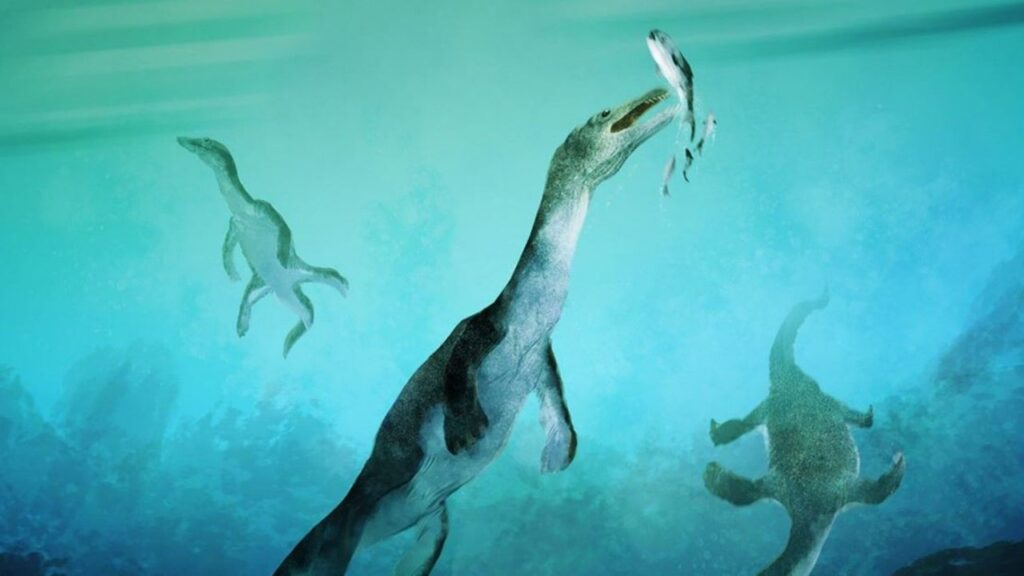A groundbreaking discovery was made by scientists in New Zealand, who identified a 246 million-year-old reptile fossil as the oldest marine reptile fossil found in the Southern Hemisphere. This remarkable finding sheds new light on the record of early sea reptiles from this region. The fossil belongs to a nothosaur, an extinct aquatic reptile that lived during the Triassic period and was a predecessor of the well-known Plesiosaurs. The vertebra was first excavated from a boulder in 1978 at the foot of Mount Harper on the South Island of New Zealand, but its significance was not fully recognized until recently.
Almost 252 million years ago, following a devastating mass extinction event, reptiles began to invade the seas, marking the beginning of the age of the dinosaurs. The age of the dinosaurs began with complex marine ecosystems being re-established, and evidence for this evolutionary milestone has been found in only a few places around the world, such as Spitsbergen, northwestern North America, and southwestern China. The discovery of this ancient reptile fossil in New Zealand adds to our understanding of how these creatures adapted and thrived in different parts of the globe.
Nothosaurs, like the one discovered in New Zealand, were known for their ability to grow to nearly 23 feet in length and had conical teeth for catching fish and squid. They swam with four limbs and were predecessors of Plesiosaurs, which emerged around 203 million years ago. The significance of the New Zealand nothosaur fossil was realized when an international team of paleontologists from Sweden, Norway, New Zealand, Australia, and East Timor came together to examine and analyze the fossil and other associated remains.
Lead author of the study, Dr. Benjamin Kear, a paleontologist from Uppsala University, stated that the New Zealand nothosaur fossil is more than 40 million years older than any previously discovered sauropterygian fossil in the Southern Hemisphere. The discovery suggests that these ancient sea reptiles inhabited a shallow coastal environment in the southern polar circle, showcasing their ability to thrive in extreme conditions. This finding challenges previous understandings of how these creatures traveled across the Earth and suggests that the ancient polar regions may have been a likely route for their earliest global migrations.
Dr. Kear also highlighted the role of extreme global warming during the dawn of the age of the dinosaurs, which allowed these marine reptiles to flourish even in the polar regions. The discovery of this nothosaur fossil opens up the possibility of finding more fossil remains of long-extinct sea creatures in New Zealand and other parts of the Southern Hemisphere, providing valuable insights into the evolutionary history of marine reptiles. This groundbreaking research has not only uncovered a new chapter in the history of prehistoric creatures but also showcases the collaborative efforts of scientists from around the world in unraveling the mysteries of our planet’s past.












